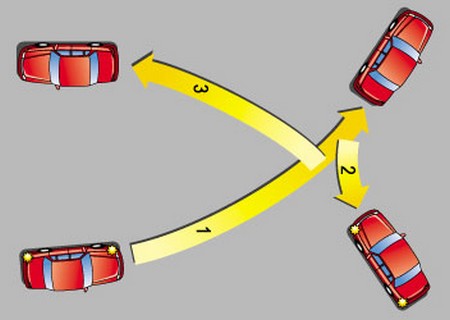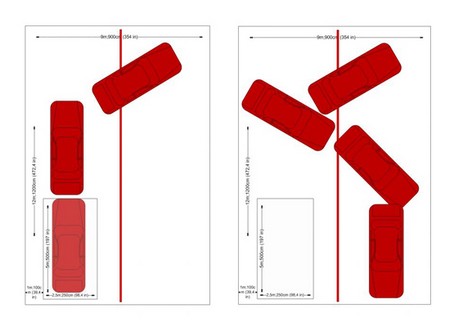A three-point turn takes place during a driving examination when the examiner asks the student to turn the vehicle around. For many people, remembering how to three-point turn can be a nerve-wracking experience, let alone carry out the task flawlessly. The only way around this is to get as much practice as you can before the big day itself.

One of the first things to remember when you’re thinking of how to three-point turn is check the traffic around you before the vehicle slows down. This includes checking traffic behind and in front of the vehicle, and checking your blind spot if necessary. Only then should you pull over to stop on the right side of the road.
While it is imperative to put your turn signal on before you slow down, do not do so if there are vehicles waiting to merge from driveways or side roads between your stopping point and you. Turn on your signal only after you have passed these situations to avoid confusing the other drivers.
Slow down steadily as you approach the curb, downshifting to a lower gear as you do so. Avoid coasting with your foot on the clutch. When you come to a stop, ensure that you are parallel to the curb and not more than one foot away from it. If there is no curb, stop as far away as possible from the part of the road on which vehicles travel. Ensure you don’t block traffic or any entrances.
Before you begin the turn, always check your mirrors and blind spot. If needed, wait until the coast is clear, i.e. there is no traffic or people stop to allow you to turn. Always remember to check the traffic in both directions when you stop while turning and turn on your left signal before you begin the turn.
With smooth, slow movements and the steering wheel turned sharply to the left, make your way across to the far left side of the road. There, you should stop and engage the reverse gear. The steering wheel has to be turned sharply to the right at this point. After checking traffic and signaling correctly, reverse the vehicle so it faces the new direction before stopping one last time and shifting gear to move forward. While the entire road should be used when making a three-point turn, you should not reverse over the shoulder or edge of the road, nor should you reverse into the curb. Check your mirrors and the traffic around you before you increase speed and merging with normal traffic.









